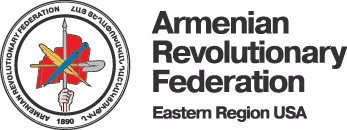Tidings from the Tauraus
I was honored and excited a few weeks ago when Asbarez editor Ara Khatchatourian asked me to review Proud son of Hadjin, the memoirs of Asadour Chalian.
This publication has been a long time coming and adds to the English language resources available to those wanting to learn in greater depth, not only about what transpired during the genocide, but before and after, too. The writing of these memoirs commenced in the 1920’s, with additions made as life progressed, and continued through the late 1950’s. I had first heard of their existence in the mid-1980’s.
One of my great-grandfathers was from Hajin/Hadjin, a town nestled in the Anti-Taurus Mountains north of Adana and Sis (the latter now in litigation with the Catholicosate of Cilicia trying to regain its properties there). Consequently, I’d always been curious about the contents of these memoirs, particularly the famous defense of the town against the siege by Ataturk’s minions. Couple this interest with the fact that there seems to be no trace of Hajin left*, based on what I could see on Google Earth, and you can appreciate the importance of more information being available.
I appreciated the pre-genocide life, both of the author and town, described early on in the book. And so the story progressed with the personal and collective interwoven, making for a very pleasant read.
An unexpected twist was the description of the siege period from an outside perspective. It turns out that Asadour Chalian was charged with organizing the shipment of men and material from Adana, where he had established a business, to assist his compatriots. He describes the perfidy of the French in letting Hadjin fall to the Turks and the attendant massacre of thousands. The story is heartbreaking, but also demonstrative of the betrayal Armenia and Armenians experienced at the hands of the World War I Allies and the U.S. Senate, which refused to sanction President Woodrow Wilson’s desire to adopt a Mandate over the first Republic of Armenia.
Chalian also describes some of the Armenian side’s politics that went hand-in-hand with the French and Turkish machinations, making for a very interesting story. Similarly, when presenting some of the post-genocide organizational work done by and for Hadjintsis in the Diaspora, he weaves the Hnchag and Tashnag partisan competition into the fabric of the story. Yet, the acrimonious flavor that typically accompanies such descriptions is absent. He repeatedly emphasizes the respect he received from all sides, despite his being a Tashnag, citing only one exception. During a particularly tense time, after a dust-up over a woman between a Tashnag and Hnchag leading to the latter’s death took on partisan overtones, Asadour Chalian was pushed to the ground, breaking his shoulder.
Naturally, the author closes his story by proudly giving readers an update as to the status of his children’s educational achievements and the birth of his first grandson.
Even the layout of the book is interesting. The first portion is the English translation. Transcription of the original Armenian (which I have not read) follows. Both are interspersed with historic photographs of people, scenes from Hajin, and pages of the original handwritten memoirs. In a few places, the English translation could be improved, but these are minor items and can be remedied in a future printing.
I was left wanting more, and hope to read “Hajno Unthanoor Badmootiun” (General History of Hajin), a book I got upon the death of one of my grandmother’s sisters 35 years ago. I also hope the trend of publishing (or republishing in English translation) memoirs from that era continues. The Gomidas Institute is one outfit that is doing this kind of work (and in an unrelated development, has just released Ambassador John Evans’ book Truth Held Hostage).
The Armenian version was reviewed, in Armenian, by Garo Armenian in the March 22 issue of Asbarez.
Touchingly, the book was funded—from translation costs to printing—by Asadour Chalian’s many grandchildren as a way of perpetuating family, Hajin, and Armenian history all at once. I strongly recommend reading these memoirs, not only because they are well presented, but because they add to our awareness of a part of our homeland that has precious little written about it in English.
The book is available free of charge, but only by contacting Asbarez or the family.
* Please note, I looked for Saimbeyli, Hajin’s nearby, small, Turkish village. It still exists, with many structures visible. But, scanning its vicinity on Google Earth showed no visible traces of previous habitation—flattened areas, crumbling structures, nothing that might suggest previous habitation, other than what may have been hillside terracing for orchards that now appear unused. Obviously, this is not a definitive way to determine if anything is left of Hajin, but it is very suggestive.
Source: Armenian Weekly Mid-West
